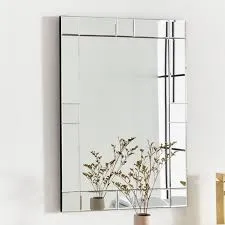

Types of Reflective Glass An Overview
Reflective glass has become a significant element in modern architecture and design, serving both aesthetic and functional purposes. By reflecting light, this type of glass can enhance the beauty of buildings while providing various benefits such as energy efficiency and privacy. In this article, we will explore the different types of reflective glass, their features, and applications.
1. Low-Emissivity (Low-E) Glass
Low-emissivity glass is designed to minimize the amount of infrared and ultraviolet light that can pass through it without compromising visible light. This type of reflective glass is coated with a thin layer of metal or metallic oxide, which helps in reducing heat transfer. Low-E glass is widely used in residential and commercial buildings for its energy efficiency, particularly in climates with extreme temperature variations. This type of glass helps maintain comfortable interior temperatures and reduces heating and cooling costs.
2. Tinted Glass
Tinted reflective glass is produced by adding color to the glass during the manufacturing process. The tinting absorbs part of the sunlight that hits the surface, which not only reduces glare but also minimizes heat buildup within the building. Available in various shades, tinted glass can be used for both functional and design purposes, allowing architects and designers to create aesthetically pleasing appearances while providing protection against harmful UV rays. Tinted glass is commonly found in office buildings, residential homes, and various commercial applications.

Mirrored glass, known for its highly reflective surface, is often used for aesthetic purposes. It is created by applying a reflective coating to the glass, giving it a mirror-like appearance. This type of glass is popular in modern architecture for its elegance and ability to create depth in design. In addition to its aesthetic appeal, mirrored glass is also beneficial for thermal insulation, as it reflects solar heat away from the building. However, it’s essential to use mirrored glass thoughtfully to ensure privacy and to minimize potential issues of glare in urban environments.
4. Reflective Coated Glass
Reflective coated glass features a specially treated layer that reflects a significant amount of light while allowing some amount of visibility. This type of glass is ideal for buildings that require both privacy and light control. Reflective coated glass comes in various levels of reflectivity, which can be selected based on the design requirements and environmental conditions. Its adaptability makes it popular in skyscrapers and large commercial buildings, where managing light and heat is crucial.
5. Semi-Reflective Glass
Semi-reflective glass is a balanced option that allows partial visibility and reflects a certain percentage of light. It is less reflective than mirrored glass but still provides some level of privacy. This type of glass is often used in contexts where a moderate balance between transparency and reflection is required, such as in conference rooms and public spaces. Its versatility makes it a popular choice for various applications, blending functionality with a modern aesthetic.
Conclusion
Reflective glass plays a pivotal role in modern architecture, offering benefits that extend beyond mere aesthetics. From energy efficiency provided by low-emissivity glass to the striking visual impact of mirrored glass, the diversity in types of reflective glass allows architects and builders to meet specific design needs while optimizing performance. As technology continues to advance, we can expect to see even more innovative types of reflective glass, expanding possibilities for sustainable and visually appealing designs in both residential and commercial settings. This versatility and efficiency will undoubtedly keep reflective glass at the forefront of architectural design.